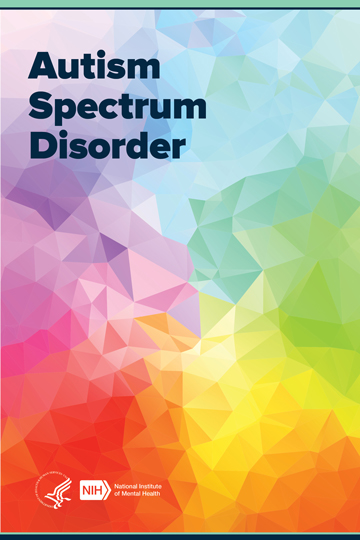With the help of Autism Behavioral Therapy, families can enhance independence in daily routines
With the help of Autism Behavioral Therapy, families can enhance independence in daily routines
Blog Article
Understanding the Influence of Behavioral Autism on Day-to-day Live and Social Interactions
You might not realize exactly how deeply behavior autism affects daily life and social interactions. Individuals on the spectrum typically navigate a world filled with interaction hurdles and sensory overload. These challenges can lead to irritation and isolation, affecting their relationships and total health.
Specifying Behavior Autism and Its Characteristics
Behavior autism, often referred to as autism spectrum condition (ASD), encompasses a range of conditions defined by challenges in social communication, interaction, and repeated actions. You may notice that individuals with ASD commonly struggle to analyze social hints, which can cause misconceptions in conversations. They may discover it tough to develop eye contact or participate in tiny talk, making social situations feel frustrating.
Interaction problems can manifest in various methods, from delayed speech advancement to a preference for utilizing fewer words. By recognizing these traits, you can cultivate an environment that promotes acceptance and encourages reliable interaction, aiding people with autism grow in their day-to-day interactions.
The Spectrum of Autism: Comprehending Variability in Habits
Autism spectrum condition (ASD) isn't a one-size-fits-all diagnosis; it varies widely amongst people. You might observe that some people with ASD display moderate symptoms, while others may deal with much more significant challenges. This irregularity can show up in habits, interests, and sensory sensitivities. You might run into individuals that are very spoken and involve conveniently in conversations, while others could favor singular activities or communicate non-verbally.
Furthermore, the method people with ASD react to sensory input can differ considerably; some could be overwhelmed by loud sounds or intense lights, whereas others flourish in promoting environments. The spectrum additionally includes distinctions in social interactions; some individuals might struggle to interpret social hints, while others navigate social setups with family member simplicity. Recognizing this irregularity is vital, as it assists you value each individual's unique experience and tailor support to their certain requirements, cultivating a more comprehensive environment for everyone.
Communication Obstacles Dealt With by People With Autism
When you engage with people on the autism range, you may observe their unique interaction difficulties. They commonly encounter problems with both nonverbal and spoken hints, which can influence their social communications. Comprehending these barriers is vital for cultivating better links and support.

Verbal Interaction Problems
Lots of individuals on the autism range experience spoken communication problems that can considerably impact their daily communications. You could locate it testing to express your thoughts, sensations, or requires clearly. This can lead to stress for both you and those around you, as misunderstandings occur. You might deal with launching conversations, keeping a subject, or comprehending nuances in speech. Often, you might like making use of simple language or repeated expressions, which can restrict your ability to take part in much deeper conversations. Your quantity, tone, or speed may not straighten with social expectations, causing others to misunderstand your purposes. Recognizing these obstacles can assist you and your assistance network develop approaches to boost communication and promote much better links with others in your every day life.
Nonverbal Interaction Barriers
Spoken communication isn't the only difficulty individuals on the autism range face; nonverbal communication obstacles can be equally as significant. You may find it tough to interpret body language, face expressions, and eye contact, which are crucial for efficient communication. These challenges can bring about misunderstandings or misinterpretations of social signs, making interactions feel confusing or frustrating. You might struggle to share your very own emotions via nonverbal methods, leaving others unclear of your sensations or objectives. This disconnect can develop sensations of seclusion and aggravation. Acknowledging these barriers is critical for promoting understanding and empathy in your interactions. By attending to nonverbal interaction, you can discover methods to boost your social experiences and enhance your general lifestyle.
Social Interaction Impacts
Social communications can typically really feel overwhelming as a result of the distinct communication challenges encountered by people with autism. You might battle with analyzing social cues, making it difficult to comprehend mockery or body language. This can cause misunderstandings or awkward moments in discussions. In addition, initiating and keeping conversations may really feel tough, causing stress and anxiety in social situations. You might prefer organized settings, making spontaneous interactions uncomfortable. It's likewise usual to original site experience problem in taking part in little talk, which can prevent developing brand-new friendships. Acknowledging these obstacles can help you discover strategies to improve communication, such as practicing social abilities in secure settings or utilizing visual aids - Autism Therapist. Comprehending your needs enables you to navigate social interactions with better confidence and simplicity.
Social Communication and Relationship Building in Autism
While structure partnerships can be challenging for people with autism, understanding their unique perspectives and interaction designs can promote significant links. You may see that several individuals on the range like direct interaction and might fight with social cues or little talk. By being uncomplicated in your communications, you can help produce an environment where they feel comfortable.
Involving in shared rate of interests can also serve as a bridge to deeper connections. Whether it's a leisure activity, a favorite show, or a shared enthusiasm, these usual strings can open doors to relationship.
Day-to-day Live Regimen: Navigating Techniques and obstacles
Navigating day-to-day life regimens can be especially challenging for individuals with autism, especially when unexpected adjustments happen. To browse these difficulties, consider applying aesthetic schedules or lists.
Establishing a routine that consists of sensory breaks can additionally be advantageous. You can plan short breaks throughout your day to recharge. It's necessary to interact with those around you, allowing them know your choices and demands. This helps create an understanding setting.
Lastly, technique mindfulness techniques to handle stress and stress and anxiety. Easy breathing exercises or basing techniques can make a significant distinction. By including these strategies, you can improve your daily routine and decrease disturbances, making life really feel extra convenient.
Staminas and Capabilities of Individuals on the Autism Spectrum
Recognizing day-to-day live regimens is simply one facet of the autism experience. Many people on the autism spectrum possess impressive staminas and abilities that establish them apart. You might locate that your attention to detail is phenomenal, allowing you to succeed in tasks that need precision and focus. Your ability to think outside the box can result in ingenious solutions in numerous scenarios.
In addition, your memory skills usually shine, especially in locations of rate of interest. Aba Therapist Near Me. This propensity for preserving details can make you a beneficial resource in areas like science, modern technology, or art. You might additionally show solid visual reasoning, enabling you to picture intricate ideas and fix problems creatively
Furthermore, your unique viewpoint on the globe can foster compassion and understanding in others, enhancing social interactions. Accepting these staminas not just increases your confidence however additionally aids others value the varied talents you offer the table.
Creating Inclusive Environments for People With Autism
Developing inclusive settings for individuals with autism begins with developing sensory-friendly rooms that deal with their distinct requirements. You can also promote opportunities for social interaction, aiding to construct relationships this hyperlink and links. By making these adjustments, you'll contribute to an extra welcoming ambience for everyone.
Designing Sensory-Friendly Spaces
While designing sensory-friendly areas, it's vital to show on the distinct needs of individuals with autism. Integrate quiet areas where people can reenergize and pull away when overwhelmed. Include visual routines or clear signage to aid individuals browse the room with confidence.
Promoting Social Communication Opportunities
Creating sensory-friendly rooms not just addresses specific comfort but likewise establishes the phase for significant social communications amongst people with autism. To promote these interactions, create inclusive environments that invite participation. Organize organized tasks, like art classes or team video games, that urge collaboration without overwhelming sensory input. Use visual help and clear communication to aid everybody engage conveniently. Motivate peer mentoring, coupling individuals with autism with supportive peers who can guide them through social situations. Furthermore, consider organizing normal area events that celebrate neurodiversity, cultivating acceptance and understanding amongst all participants. By carrying out these strategies, you can enhance social opportunities, aiding individuals with autism build relationships and reinforce their social skills in a secure, welcoming atmosphere.

Frequently Asked Concerns
How Can Pals Support Somebody With Behavioral Autism?
You can sustain a good friend with behavior autism by being client, paying attention actively, and appreciating their boundaries. Participate in tasks they enjoy, communicate openly, and develop a comfy setting where they feel valued and recognized.
What Resources Are Available for Parents of Children With Autism?
You can discover various resources for parents of children with autism, including assistance groups, academic sites, and neighborhood community solutions. Getting in touch with various other moms and dads can additionally give beneficial understandings and shared experiences to aid browse obstacles.
Can Behavioral Autism Change Over Time?

Yes, behavioral autism can change gradually. You could notice changes in read this article communication, social abilities, and actions as your kid expands. Early treatment and support usually play essential functions in these developing changes.
How Do Sensory Sensitivities Influence Day-to-day Live?
Sensory sensitivities can make day-to-day experiences frustrating. You may have problem with bright lights or loud noises, leading to stress and anxiety or evasion. Finding environments that suit your requirements can significantly enhance your convenience and overall day-to-day live.
What Prevail Misconceptions About Behavioral Autism?
You could think behavior autism only influences communication abilities, yet it's more complex. Several think people do not have empathy or intelligence, which isn't true. Comprehending these misunderstandings assists foster approval and support for those on the spectrum.
Behavior autism, usually referred to as autism spectrum problem (ASD), includes a range of conditions characterized by challenges in social interaction, interaction, and repeated behaviors.Social communications can commonly really feel overwhelming due to the special interaction obstacles faced by individuals with autism.Designing sensory-friendly spaces not just addresses individual comfort however also establishes the stage for purposeful social communications amongst individuals with autism. Encourage peer mentoring, pairing people with autism with helpful peers that can guide them with social circumstances. By executing these techniques, you can improve social possibilities, helping people with autism build relationships and enhance their social abilities in a safe, inviting atmosphere.
Report this page